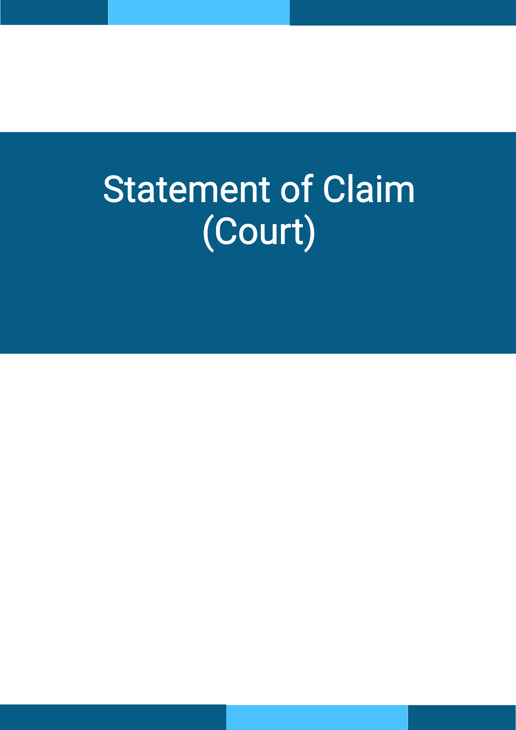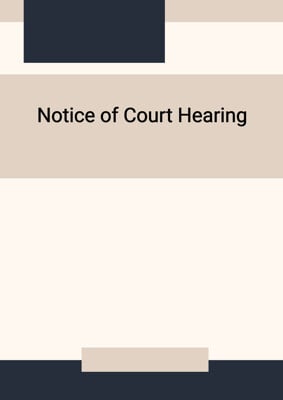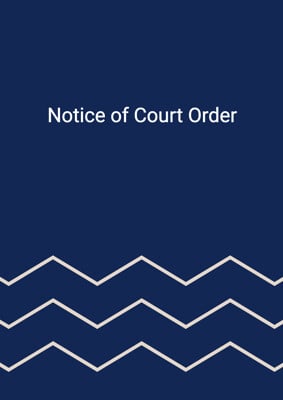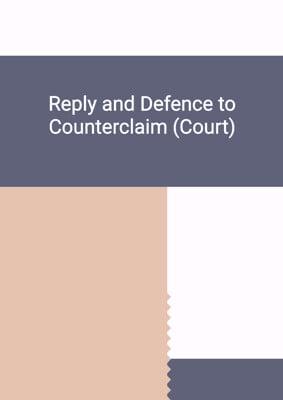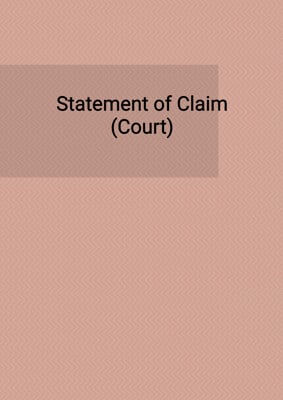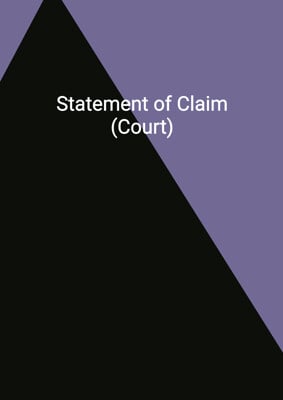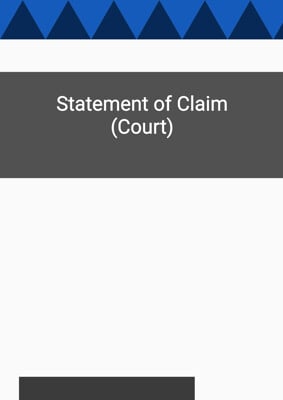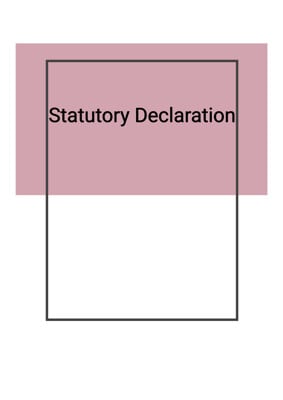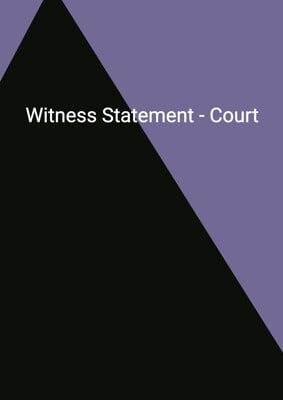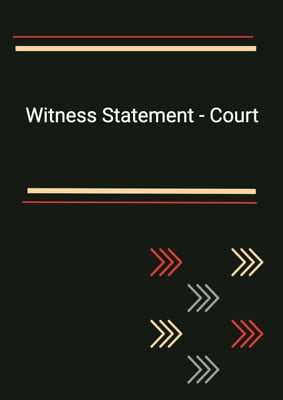How to Tailor the Document for Your Need?
01
Create Document
Click "Create Document" button and the document will be prepared with your account details automatically filled in.
02
Fill Information
Please fill in any additional information by following the step-by-step guide on the left hand side of the preview document and click the "Next" button.
03
Get Document
When you are done, click the "Get Document" button and you can download the document in Word or PDF format.
04
Review Document
Please review the document carefully and make any final modifications to ensure that the details are correct before publication / distribution.
Document Preview
Document Description
The document titled 'Statement of Claim (Court)' is a legal document that is used in court proceedings to initiate a lawsuit. It is an important document as it outlines the claims made by the plaintiff against the defendant and provides the basis for the legal action.
The entire document is divided into several sections, each serving a specific purpose. The first section is the title, which clearly states the name of the document and its purpose. This helps in identifying the document and its relevance in the court proceedings.
The next section is the content of the document, which includes the details of the case. It starts with the case number and the court jurisdiction, which are essential for record-keeping and proper identification of the case. The parties involved in the lawsuit, namely the plaintiff and the defendant, are clearly mentioned with their respective names and addresses.
The 'Statement of Claim' section is the core of the document. It provides a detailed account of the claims made by the plaintiff against the defendant. It starts by stating the plaintiff's status as a purchaser of products and the defendant's status as a company. The contract between the plaintiff and the defendant is mentioned, along with its date and nature (whether it was made orally or in writing).
The order section outlines the express conditions of the contract, which include the fitness of the products for the plaintiff's business and their satisfactory quality. It also mentions the implied conditions that are legally binding and necessary for the contract to be effective.
The particulars section provides specific details regarding the damages or losses suffered by the plaintiff as a result of the defendant's breach of contract. Depending on the circumstances, the damages may include financial losses or the need to purchase products from another supplier at a higher price.
Finally, the 'Plaintiff's Claims' section lists the remedies sought by the plaintiff, such as a refund of a specific amount, damages for breach of contract, interest, costs, and any other relief deemed necessary by the court.
In summary, the 'Statement of Claim (Court)' document is crucial in initiating a legal action and presenting the plaintiff's case against the defendant. It provides a detailed account of the claims, the contract terms, and the damages suffered, serving as a foundation for the court proceedings.
How to use this document?
Guidance on how to use the 'Statement of Claim (Court)' document:
1. Identify the parties: Clearly state the names and addresses of the plaintiff and the defendant in the designated sections of the document. This ensures proper identification of the parties involved in the lawsuit.
2. Provide contract details: Specify the date and nature of the contract between the plaintiff and the defendant. If the contract was made orally, mention it accordingly. This information helps establish the basis of the legal action.
3. Outline the claims: In the 'Statement of Claim' section, provide a detailed account of the claims made by the plaintiff against the defendant. Clearly state the reasons for the claims and any relevant contractual terms that have been breached.
4. Specify damages or losses: In the 'Particulars' section, clearly state the damages or losses suffered by the plaintiff as a result of the defendant's breach of contract. Provide specific details, such as financial losses or additional expenses incurred.
5. List the remedies sought: In the 'Plaintiff's Claims' section, clearly state the remedies sought by the plaintiff. This may include a refund of a specific amount, damages for breach of contract, interest, costs, and any other relief deemed necessary by the court.
6. Verify the facts: Before filing the document, ensure that all the facts stated in the 'Statement of Claim' are true and accurate. Review the document for any errors or omissions.
7. File the document: Once the document is complete and verified, file it in the appropriate court. Follow the court's procedures and timelines for filing the document.
8. Serve the document: Serve a copy of the filed document to the defendant according to the court's rules and regulations. This ensures that the defendant is aware of the legal action and has an opportunity to respond.
9. Attend court proceedings: Attend all court proceedings related to the lawsuit. Be prepared to present evidence, argue the case, and comply with any court orders or instructions.
10. Seek legal advice: If needed, consult with a lawyer or seek legal advice throughout the process. They can provide guidance on the legal aspects of the case and help navigate the court proceedings effectively.
Not the right document?
Don’t worry, we have thousands of documents for you to choose from:
